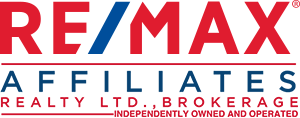Ottawa’s housing market is becoming much livelier with realtors reporting a nearly nine per cent jump in June year over year, in prices and number of transactions alike.
The average sale price for residential properties in Ottawa was up 8.8 per cent to reach $434,500 in June, while prices for condominiums surged 9.4 per cent to $289, 900, the Ottawa Real Estate Board reported Thursday. Unit sales of residential properties climbed 6 per cent in June and the number of condominiums sold increased a remarkable 23 per cent, representing 400 plus units.
Somewhat surprisingly, Ottawa homeowners who sold their property in June registered bigger percentage gains than their counterparts in Toronto. The average selling price for all homes in metro Toronto increased a comparatively modest 6.3 per cent year over year to nearly $794,000.
Prices in the Toronto market have been moderating after the government introduced measures in April to cool speculation and increase the supply of houses. Average prices there have dropped nearly 14 per cent since hitting a peak of $919,600 in April.
In sharp contrast, the price of homes sold by Ottawa Real Estate Board members has been roughly stable from April to June.
Even so, the gap between the two markets remains enormous when it comes to key categories such as single-family homes. The price of a detached home in the Toronto area (area codes 416 and 905) in June was nearly $1.1 million, up 7.8 per cent year over year.
In Ottawa, the average two-storey house sold for $458,100 in June, up 8.9 per cent compared to June 2016.
Board president-elect Ralph Shaw points out average prices locally were boosted by an unusually large number of transactions involving high-end homes. In June, realtors sold 46 units for more than $1 million each, more than double the number during the same month a year ago.
To get around this type of distortion, the Board relies on benchmark prices it developed along with other regional agencies. These are based on an index that reflects multiple housing characteristics such as roof type, number of bathrooms and age of the property, and offers a more consistent view of underlying trends.
The June benchmark showed that single-family homes across Ottawa sold for an average $393,200, up 6.2 per cent from June 2016.
The statistic suggests a couple of distinct patterns are emerging in Ottawa’s suddenly buoyant housing market.
Nearly 40 per cent of 45 real estate districts tracked by the Board saw double-digit gains in June in the sale price of single-family homes compared to a year earlier. It’s probably no coincidence that the biggest bumps were recorded in corridors that follow the western and southern spurs of the city’s developing light-rail system.
Leading the pack are three districts just to the west of Bank St. and south of the airport — poised to benefit from the projected 2021 southern LRT extension.
The Hunt Club/Windsor Park district saw the benchmark price of single-family homes surge nearly 27 per cent year over year in June to reach $461,500. Prices also moved up smartly in the nearby districts of Mooney’s Bay/Carleton Square (up 16.7 per cent vs June 2016 to $474,100) and Billings Bridge/Riverside (a 16.5 per cent gain to $455,000).
The June data also revealed remarkable strength in house prices along the corridor stretching west along the Ottawa River from Mechanicsville towards Kanata — which will eventually be served by the Confederation West light rail transit spur. Nearly all these districts saw double-digit gains year over year in the price of family homes.
Some areas are getting downright expensive by Ottawa standards. Carlingwood/Westboro — bounded by Carling Avenue on the south, Woodroffe Avenue to the west and Churchill Avenue on the east — saw the price of single-family homes surge 11.7 per cent to $735,600. It’s the first time this district has seen benchmark prices above $700,000 — and it’s now pricier than Glebe/Ottawa East, where benchmark prices in June were $700,100 (up 7.7 per cent).
As has been the case for a number of months, house prices in the eastern sections of the city have been lagging. In part this reflects the ongoing consolidation of National Defence headquarters at the former Nortel campus at 3500 Carling Avenue.
None of the 14 Board districts in east Ottawa recorded double-digit gains in June in benchmark prices.







